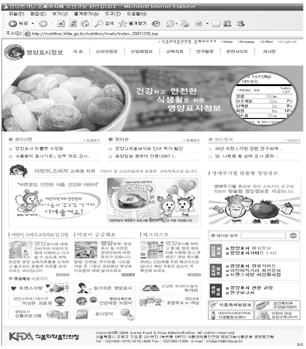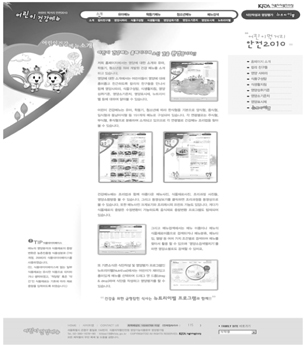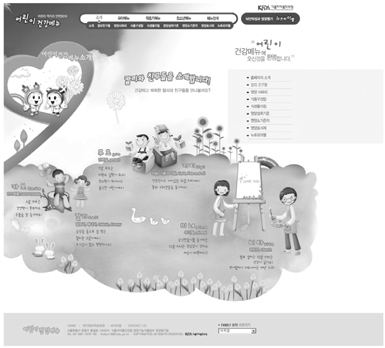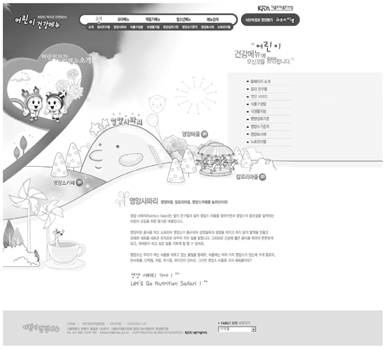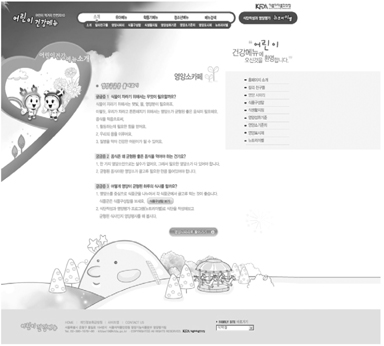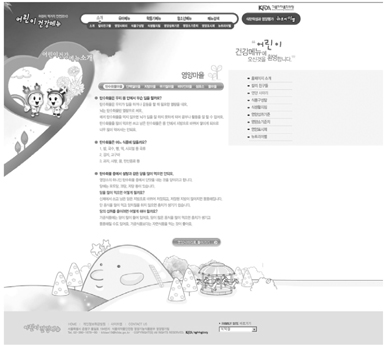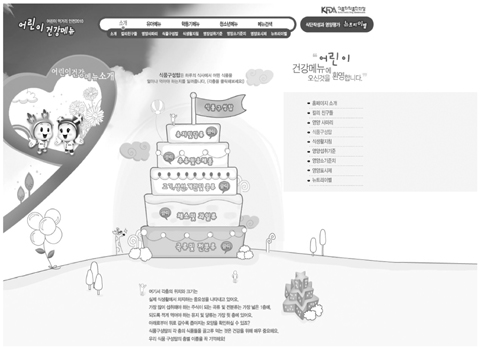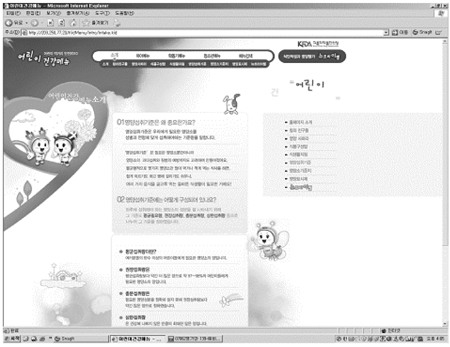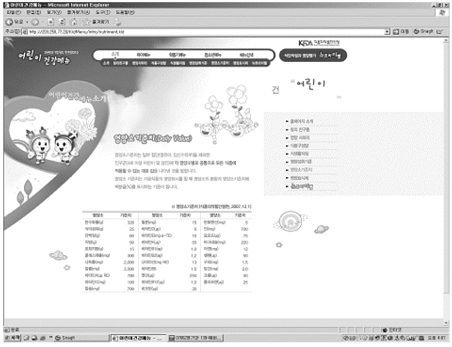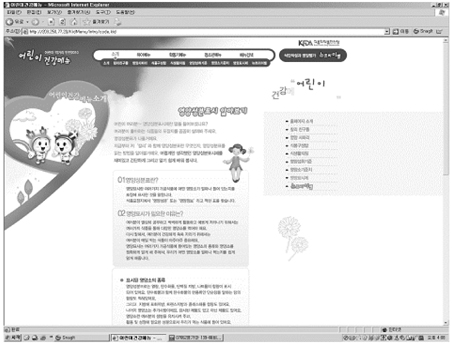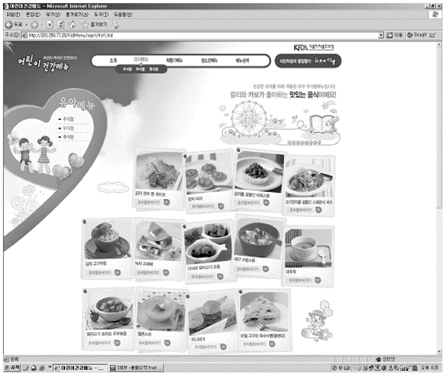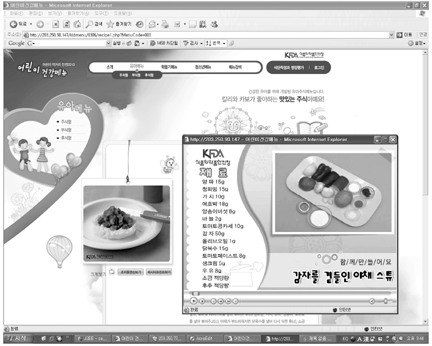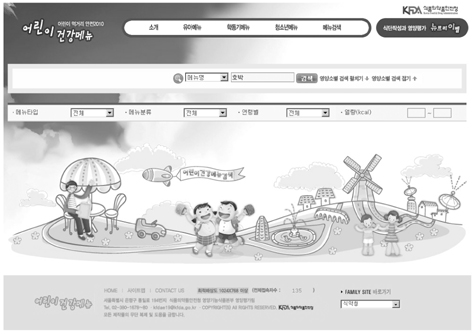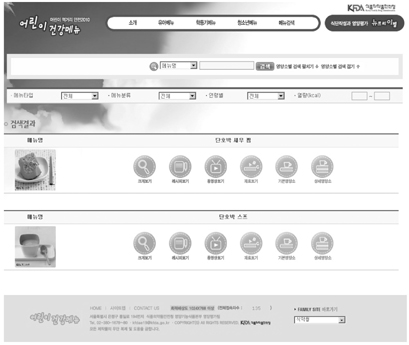Nutr Res Pract.
2008 Jun;2(2):114-120.
Construction of web-based nutrition education contents and searching engine for usage of healthy menu of children
- Affiliations
-
- 1Department of Food and Nutrition, University of Ulsan, Ulsan 680-749, Korea. smhong@ulsan.ac.kr
- 2Department of Digital Information Design, University of Ulsan, Ulsan 680-749, Korea.
- 3Department of Culinary Arts, Woosong University, Daejeon 300-718, Korea.
- 4Nutritional Evaluation Division, Korea Food and Drug Administration, Seoul 122-704, Korea.
- 5School of Computer Engineering & Information Technology, University of Ulsan, Ulsan 680-749, Korea.
Abstract
- A diet habit, which is developed in childhood, lasts for a life time. In this sense, nutrition education and early exposure to healthy menus in childhood is important. Children these days have easy access to the internet. Thus, a web-based nutrition education program for children is an effective tool for nutrition education of children. This site provides the material of the nutrition education for children with characters which are personified nutrients. The 151 menus are stored in the site together with video script of the cooking process. The menus are classified by the criteria based on age, menu type and the ethnic origin of the menu. The site provides a search function. There are three kinds of search conditions which are key words, menu type and "between" expression of nutrients such as calorie and other nutrients. The site is developed with the operating system Windows 2003 Server, the web server ZEUS 5, development language JSP, and database management system Oracle 10 g.
Figure
Reference
-
1. Ahn Y, Kim HM, Seo JS, Yoon EY, Bea HJ, Kim KW. Needs assessment for developing a nutrition information site for elementary school children among elementary school dietitians. Korean Journal of Community Nutrition. 2007. 12:405–416.2. Ahn Y, Kim KW. Study on utilization status of internet and needs assessment for developing nutrition education programs among elementary school children. Nutrition Research and Practice. 2007. 1:341–348.
Article3. Boyle MA. Community nutrition in action. 2003. 3rd Eds. USA: Tomson wadsworth;309–311.4. Department of Health and Welfare. Korean Health Industry Development Institute. The Third Korea National Health & Nutrition Examination Survey (KNHANES III), 2005-Nutrition Survey(1). 2006. Seoul. Republic of Korea: Department of Health and Welfare.5. Han JS. A computerized system for diagnosis and nutritional assessment of dietary intakes : Recommended dietary allowances for Koreans, 6th revision. Journal of the Korean Society of Food science and Nutrition. 1997. 26:726–732.6. Han JS. A system for nutritional assessment and diagnosis of dietary intakes through internet. Journal of the Korean Society of Food science and Nutrition. 2000. 29:1177–1184.7. Han JS, Jeong JH. A web-based internet program for nutrition counseling and diet management of patient with diabetes mellitus. Journal of the Korean Society of Food science and Nutrition. 2004. 33:114–122.
Article8. Her ES, Lee KH. Utilization status of internet and dietary information of school children in Gyeongnam and Jeonbuk areas. Korean Journal of Community Nutrition. 2003a. 8:15–25.9. Her ES, Lee KH. Effect-evaluation of nutritional education program using internet for school children. The Korean Journal of Nutrition. 2003b. 36:500–507.10. Her ES, Lee KH. Development of computer-aided nutritional education program for the school children. The Korean Journal of Nutrition. 2002. 35:791–799.11. Hong SM. Development of computer programs for nutrition counseling. The Korean Journal of Nutrition. 1989. 22:275–289.12. Hong SM. Development status and application of software in nutrition. The Korean Journal of Nutrition. 1996. 29:1170–1174.13. Hong SM, Kim G. System for nutrition counseling and screening. Korean Journal of Community Nutrition. 2005. 7:220–229.14. Hong SM, Cho HS, Kim G. A basic study of food exchange database construction and search system (ENECC/E-Food Exchange) based on internet. Journal of the Korean Dietetic Association. 2003. 9:159–171.15. Hong SM, Jeong HJ. Model development of nutrition labeling on restaurant and fast-food. 2007. Seoul. Republic of Korea: Korean Food & Drug Association report;124–181.16. Joni Youngwirth. The evolution of computers in dietetics: A review. J Am Diet Assoc. 1983. 82:62–67.
Article17. Kang HJ, Kim KJ, Kim I. A study on the computerized nutrition counseling program by food intake and exercise amount checking. The Korean Jounal of Nutrition. 1999. 32:598–607.18. Kim YJ, Yoon EY. Development and evaluation of nutrition education program through internet. Korean Journal of Community Nutrition. 1999. 4:546–553.19. Kolasa KM, Miller MG. New developments in nutrition education using computer technology. J Nutr Educ. 1996. 28:7–14.
Article20. Lee JW, Seo JS, Kim KE, Ly SY. A needs assessment to develop website contents on nutritional information and counseling for teenagers. Korean Journal of Community Nutrition. 2002. 7:664–674.21. 2006 Survey on the computer and internet usage. National Internet Development Agency of Korea, Ministry of Information Communication Republic of Korea. 2007. Accessed on 8/1/07. http://isis.nida.or.kr/index_unssl.jsp.22. Park YH, Kim HH, Shin KH, Shin EK, Bae IS, Lee YK. A survey on practice of nutrition education and perception for implementing nutrition education by nutrition teachers in elementary schools. The Korean Journal of Nutrition. 2006. 39:403–416.23. Shin EK, Shin KH, Kim HH, Park YH, Bae IS, Lee YK. A survey on the needs educators, learners and parents for implementing nutrition education by nutrition teachers in elementary schools. Journal of the Korean Dietetic Association. 2006. 12:89–101.24. The Korean Nutrition Society. Dietary Reference Intakes (DRIs) for Koreans. 2005. Seoul. Republic of Korea:25. Youn SJ. Implementation of WEB site for nutrition assessment and management. 2001. Ministry of Health Welfare and Family Affairs;[Abstract].
- Full Text Links
- Actions
-
Cited
- CITED
-
- Close
- Share
- Similar articles
-
- The Development of Website-based Food and Nutrition for Women
- Development of an Educational Web Site and e-Learning System for Elementary School Students to Reduce Sugar, Natrium and Fat Intakes
- Development and Application of a Web-Based Tailored Nutrition Management Program and Change in Knowledge of Nutrition and Eating Habits in Elementary Students
- Development of Nutrition Education Contents for Pregnant Women Based on Effective Communication Strategies
- Evaluation of a Nutrition Education Website for Children

